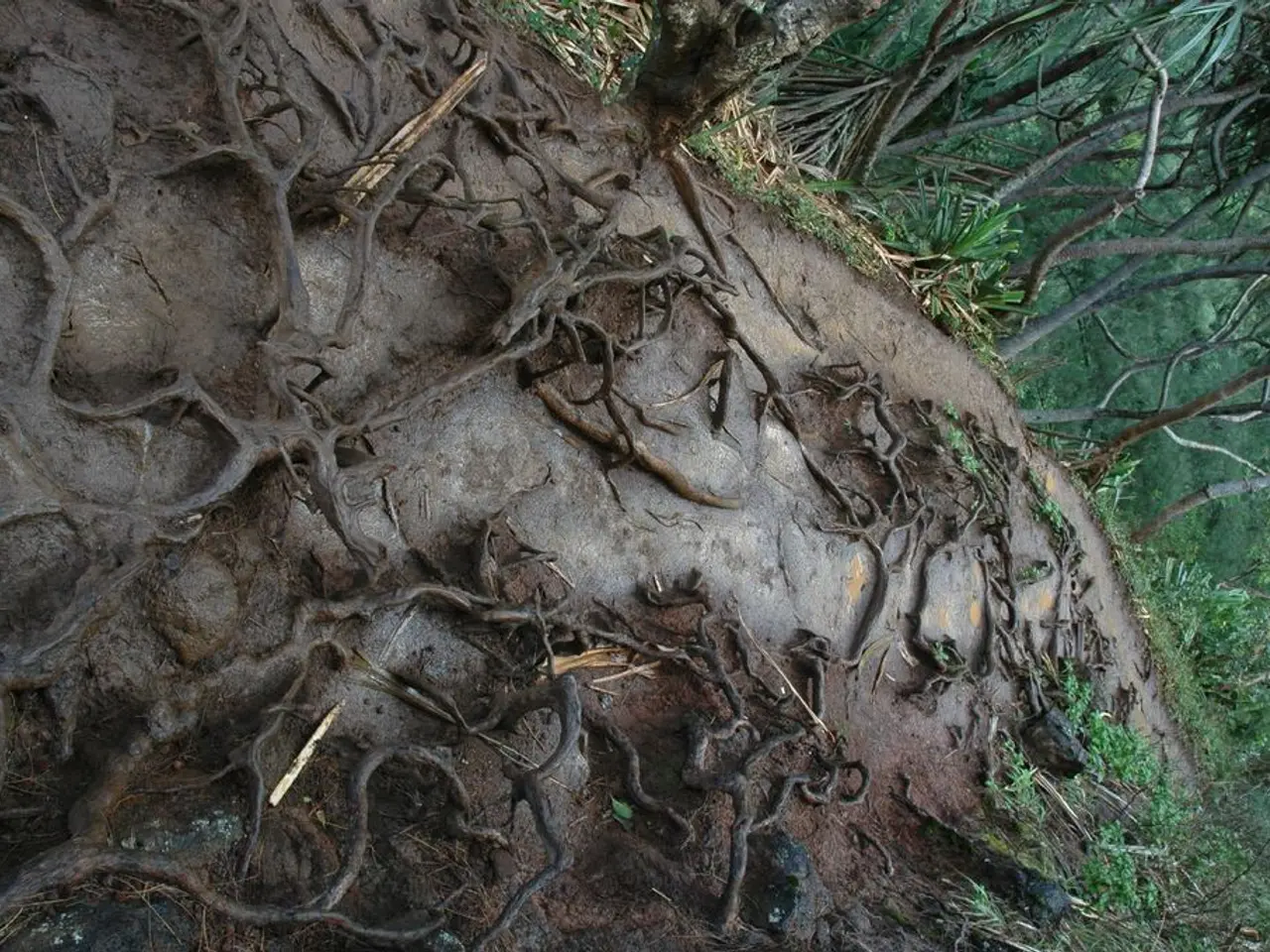Unveiling the Key Players in Soil Decomposition and Fertility
Soil Enrichment Through Organic Breakdown of Vegetation
Several organisms play pivotal roles in decomposing plant material in terrestrial ecosystems, contributing significantly to soil health and fertility.
The Efficient Decomposers: Fungi and Bacteria
Fungi, such as molds, yeasts, and mushrooms like Marasmius, Pleurotus (oyster mushrooms), and Trametes (turkey tails), are among the most efficient decomposers, breaking down tough, complex materials like cellulose and lignin—the main constituents of plant cell walls. Saprophytic bacteria also play a significant role, breaking down simpler organic compounds and sometimes even complex substances like lignin and hemicellulose.
Other Microorganisms and Soil Animals
Certain fungus-like organisms and, to a lesser extent, blue-green algae and other soil-dwelling microbes also contribute to decomposition. Larger soil organisms such as earthworms, springtails, mites, and nematodes fragment organic material, increasing surface area for microbial attack, but they mainly rely on the breakdown provided by fungi and bacteria.
Nutrient Cycling and Soil Fertility
The decomposition process is central to nutrient cycling and soil fertility. As these organisms digest organic matter, they convert complex organic molecules into simpler, soluble forms that plants can readily absorb, such as ammonium, nitrates, nitrites, and phosphate. The conversion of organic nitrogen in proteins and nucleic acids into inorganic forms (ammonium, nitrates) is a critical function of soil bacteria, especially in the nitrogen cycle.
Improving Soil Structure
The activities of decomposers contribute to the formation of soil aggregates. Fungal hyphae physically bind soil particles together, while the resulting organic matter (humus) enhances soil’s water-holding capacity and aeration. Larger decomposers, like earthworms, physically mix organic matter into the soil, further enhancing structure and fertility.
A Summary of Roles
| Organism Group | Main Decomposition Role | Contribution to Fertility | Contribution to Soil Structure | |-----------------|----------------------------------------|-----------------------------------|-----------------------------------------| | Fungi | Break down cellulose, lignin | Release nutrients (N, P, C) | Form aggregates, produce humus | | Bacteria | Digest simpler & some complex organics | Mineralize N, P, S | Help form aggregates | | Soil Animals | Fragment organic matter | Distribute nutrients, aerate soil | Mix organic matter, create channels |
Clay-Busting Plants and Other Strategies
Plant roots can aid in the decomposition process, and certain plants, known as clay-busting plants, can help improve clay soil structure. These include artichoke, daikon radish, cowpea, mustard, and annual sunflower. Improving clay soil is a gradual process that requires time and patience. Roots of some plants, like daikon or yams, can be used to break up compacted clay soils.
Contouring the land by creating alternating high peaks and low valleys in the garden terrain can help improve clay soil drainage. Plant roots help the ground absorb water, reducing the risk of flooding and landslides. Aerating the soil by injecting air pockets can also be done using tools such as a broadfork or a digging fork, improving drainage and breaking up compaction.
In conclusion, fungi and bacteria are the primary decomposers of plant material, releasing essential nutrients and contributing to the formation of soil organic matter and stable soil structure. Soil animals assist by fragmenting and mixing organic material, but the biochemical breakdown is chiefly microbial. This decomposition process is fundamental to nutrient recycling, soil fertility, and the maintenance of healthy, productive soils.
In the context of health and wellness, understanding the decomposition and fertility of soil is relevant to nutrition, as it influences the growth of crops and the availability of essential nutrients like nitrates, phosphates, and ammonium. Fitness and exercise can further be connected, as the decomposition process is facilitated by various organisms like earthworms and other soil animals, which are reminiscent of the symbiotic relationship between muscle fibers and cells during physical exertion. In this case, the soil animals fragment organic matter, similar to how muscles break down energy sources during exercise.




